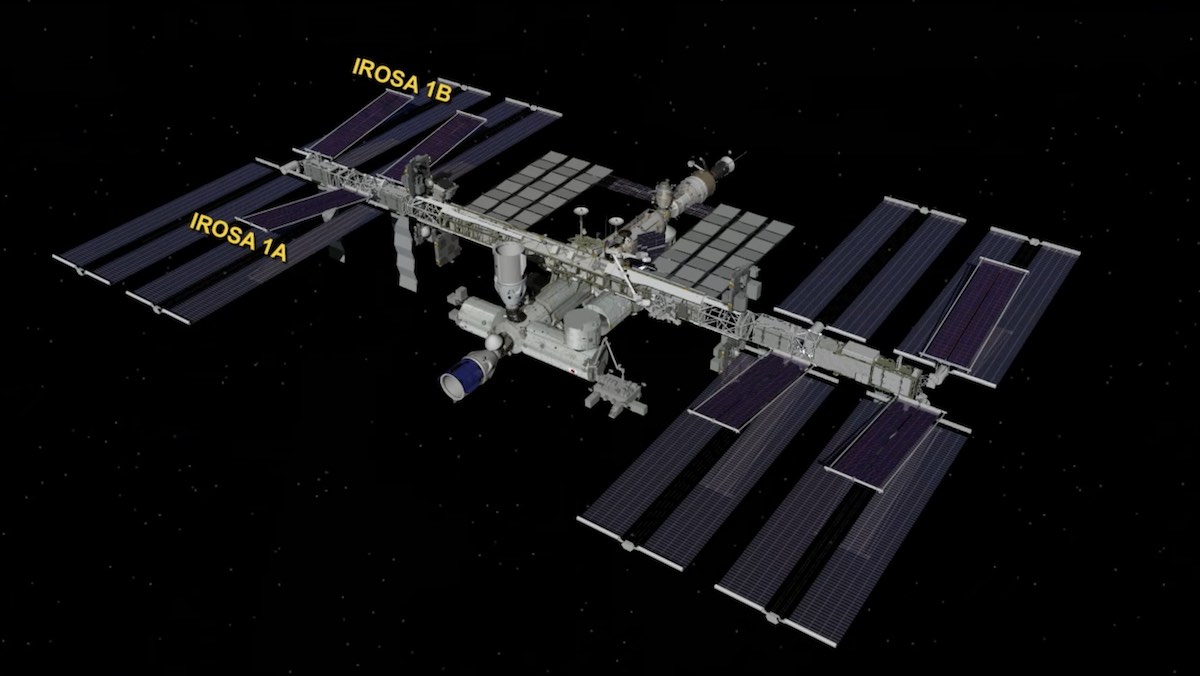Space News & Blog Articles
Watch live: Astronauts working to install solar array outside International Space Station
NASA astronauts Woody Hoburg and Steve Bowen ventured back outside the International Space Station Thursday for their second spacewalk in six days to install and deploy another roll-out solar array to augment the power system on the orbiting laboratory.
The astronauts switched their spacesuits to internal battery power at 8:42 a.m. EDT (1242 UTC) Thursday to mark the official start of the spacewalk, which will follow a similar timeline as an excursion June 9, when Hoburg and Bowen connected and unfurled another solar array on the space station’s football field-long power truss.
Another roll-out solar planet will be installed Thursday on the far right, or starboard, end of the station’s truss backbone. The two new ISS Roll-Out Solar Arrays, or iROSA units, were delivered to the space station June 5 by a SpaceX Cargo Dragon supply spacecraft, following previous SpaceX cargo missions that hauled four roll-out solar blankets to the space station in 2021 and 2022.
The solar arrays are designed to partially cover the space station’s original solar panels, delivered by space shuttle assembly missions between 2000 and 2009. The older solar panels have degraded over time, as expected, and the new roll-out arrays come with improved efficiency to boost the station’s power output back above original levels. They were built by Redwire under contract with Boeing and NASA.
NASA is planning to order a final pair of roll-out solar arrays to complete the space station’s electrical upgrade, which will ensure the lab has enough power to support research through the station’s planned retirement date in 2030. The final set of iROSAs will be delivered in 2025.
After leaving the station’s Quest airlock module Thursday, Hoburg and Bowen will move to the starboard side of the station’s truss backbone. The spacewalkers will remove the solar blankets, which were rolled up on spools to fit inside the SpaceX cargo capsule for launch, from a carrier structure and move the iROSA unit to the S6 truss segment at the far end of the station.
The iROSA unit is about the size of a refrigerator when folded up in launch configuration. Hoburg and Bowen will attach the rolled-up solar array onto a mounting bracket installed on a previous spacewalk, then unfold a hinge in unfold the two blankets making up the iROSA unit, like opening the cover to a book. The astronauts will torque eight bolts with an electrical tool to firmly mount the iROSA to its mounting bracket.
The mounting bracket plugs the new arrays into the station’s power channels and rotary joints, which keep the solar wings pointed at the sun as the spacecraft races around Earth at more than 17,000 mph.
The International Space Station has eight power channels, each fed with electrical power generated from one solar array wing extending from the station’s truss backbone. The new solar array to be deployed Thursday will produce electricity for the space station’s 1B power channel.
 Artist’s illustration of the International Space Station with three sets of new roll-out solar arrays. The spacewalk Thursday, June 15, focuses on installing the iROSA on Channel 1B of the power system on the far right, or starboard, end of the space station’s power truss. Credit: NASA
Artist’s illustration of the International Space Station with three sets of new roll-out solar arrays. The spacewalk Thursday, June 15, focuses on installing the iROSA on Channel 1B of the power system on the far right, or starboard, end of the space station’s power truss. Credit: NASA
Then Bowen and Hoburg will mate four electrical connectors to the new roll-out solar array, which will be positioned to partially cover one of the space station’s original solar panels delivered by a space shuttle mission during the lab’s construction in March 2009.
The astronauts will connect a “Y” cable to allow power from both the original solar array and the new iROSA to flow into the station’s power grid, then will release two more bolts that kept the iROSA blankets rolled up for launch.
The blankets will take about 6 to 10 minutes to unroll to their fully deployed length of 63 feet (19 meters). Each roll-out solar array measures about 20 feet (6 meters) wide, and are about half the length and half the width of the station’s original solar arrays.
Despite their smaller size, each of the new arrays generate about the same amount of electricity as one of the station’s existing solar panels. The design of the deployment mechanism eliminates the need for motors to drive the solar array open.
Once the blanket unfurls, the astronauts will adjust tensioning bolts to secure the iROSA blanket in place.
With their tasks complete, the astronauts will make their way back to the Quest airlock and close the hatch.
The spacewalk Thursday is the 10th in Bowen’s astronaut career, and the second for Hoburg. It is the 265th spacewalk since 1998 in support of International Space Station assembly and maintenance, and the eighth spacewalk outside the research outpost this year.
This email address is being protected from spambots. You need JavaScript enabled to view it. the author.
Follow Stephen Clark on Twitter: @StephenClark1.
When you subscribe to the SpaceZE News Feed, we will send you an e-mail when there are new updates on the site so you wouldn't miss them.

